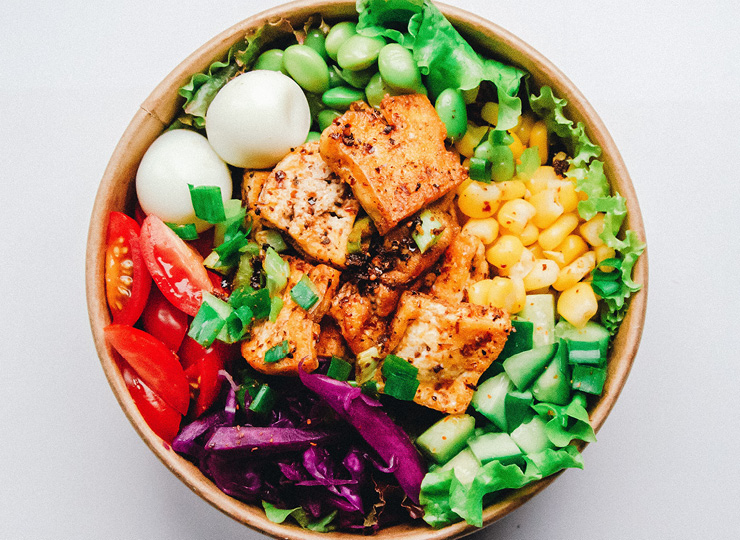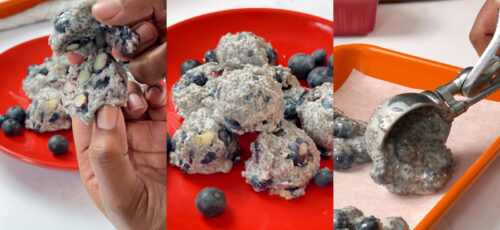
By Maelee Sutton
In a world of social media and TikTok trends, it can feel impossible to decipher fact from fiction and myth from reality. Many of us are bombarded with endless different diets and approaches to food that claim to “fix” what we dislike about ourselves. Few aspects of nutrition are presently discussed more than protein, what it can do for us, and how much we should eat of it. But what is the truth? What even is protein, and is it really that important? Well, let’s break it down!

- What is protein?
Before discussing what protein can do for us, it is crucial to establish a foundation of what it IS. Protein is one of three macronutrients necessary for bodily health, alongside fat and carbohydrates. It is built up of varying amounts and combinations of 20 amino acids – aka the “building blocks of protein.” Of the 20 amino acids, nine are considered essential, which means the body cannot make them within itself, and thus, they must be consumed through food. The other 11 amino acids can be built by the body from the other essential amino acids. These amino acids can be found in many foods, as we discuss later, and are a necessary part of any healthy, well-rounded diet.
- Why is protein important?
The utilization of protein in the body ranges extensively, and its importance is difficult to overstate. Starting with the most well-known function of protein, it helps our muscles to grow in both size and strength. As we strain our muscles through exercise, we cause microscopic tears in our muscle fibers.
When we provide our body with protein afterward, the amino acids then help rebuild these muscles even stronger. It is important to note that this role of protein is important for more than just aesthetic reasons. Strong muscles help support our body as we age, preventing falls and protecting our bones from breaking.
However, this is only the very beginning of protein’s uses in the body. Protein also plays a crucial role in strengthening our body’s immune system. The digestive system breaks down protein into its amino acid components, which are subsequently used to help create antibodies. These antibodies help protect our body from antigens, which are tiny particles that cause harm to our bodies. Without antibodies, the antigens that cause COVID-19, flu, etc. would be able to ransack our bodies and cause irreparable damage.
Furthermore, protein helps regulate our immune system to ensure it does not react too strongly or too weakly to threats. When our immune system senses a threat, it must react with enough precision to kill the threat but not cause too much damage to our body. A type of white blood cell known as lymphocytes is absolutely integral to this task. Protein comes into play by signaling the lymphocytes to both attack the immediate threat and identify the threat for any future encounters. As such, we are able to strengthen our immunity to various antigens and reduce the severity of future illnesses.

The rest of the protein’s functions tend to be less known. Protein plays a major role in keeping our skin strong, our hair shiny, and our nails thick. Since our skin is our largest organ and our body’s first barrier against threats, keeping our skin intact and strong is crucial to maintaining our health. Protein helps rebuild the skin after it is damaged by cuts, burns, and any other lacerations. It is also responsible for helping to balance and regulate our hormones, including insulin. Lastly, protein provides a backup energy source for our bodies, in cases of insufficient carbohydrate or fat intake, and prolongs satiety after eating. As such, it can be a useful tool in losing weight by reducing our desire to snack.
- Sources of protein
There are two main categories of proteins: animal proteins and plant proteins. Animal proteins include chicken, pork, beef, and turkey as well as sea creatures such as shrimp, salmon, anchovies, and cod. Products of animals are also included in this category – milk, eggs, Greek yogurt, cottage cheese, and so on. Plant proteins are more difficult to identify. The main plant groups that contain protein are legumes, nuts, and seeds; this includes their products, as well. Examples of plant proteins include tofu, tempeh, edamame (all soy products), seitan, lentils, chickpeas, beans, almonds, and other nuts.
Of all protein sources, only animal proteins can be considered “complete proteins,” because they contain all the essential amino acids. However, this does not mean it is impossible to consume the essential amino acids on a vegan, vegetarian, or otherwise altered diet. The trick to satisfying your body’s needs is diversifying your protein sources and combining multiple plant protein foods. Grains and legumes are called complementary proteins because they combine to contain all 9 of the essential amino acids – like black beans and rice or whole wheat bread with peanut butter. Additionally, nuts/seeds can be combined with legumes for a complete amino acid profile – e.g. a mix of roasted nuts, seeds, and peanuts. Even for those who are not on a restricted diet, keeping a diverse protein intake helps ensure your body gets all types of amino acids since they all play different, important roles in the body.

- How much protein to eat?
Ideal protein can vary drastically based on activity level, fitness goals, and health conditions. The RDA (recommended daily allowance) of protein is 0.8 grams per kilogram of body weight or 0.36 grams per pound. However, the RDA is meant as a guideline to prevent deficiency of nutrients and can be viewed as a “minimum” requirement. For individuals who are pregnant, breastfeeding, recovering from injury, or training to lose weight/gain muscle, they should strive to consume a higher amount of protein. However, individuals with chronic kidney disease or other diseases affecting the kidneys should limit their protein intake, as to not further damage their kidneys. Seeing as protein intake is highly individualized, it is best to consult your doctor and dietitian about your specific needs. Regardless of how much protein you are consuming, the focus should be on choosing high-quality protein sources with diverse amino acid content. Protein shakes and bars are great tools to meet protein goals, but they should be used as their names imply, as supplements.
The goal of this blog is to provide some clarity on the importance of protein and its many functions in the body. While protein needs may differ, our focus should remain on consuming whole protein sources comprised of varying amino acids. In doing so, we will be providing our bodies with what they need to maintain health in everything from skin and nails to hormone function and muscular strength.
Maelee Sutton, MS, ACSM-CPT, is a personal trainer at Crunch Fitness.























































